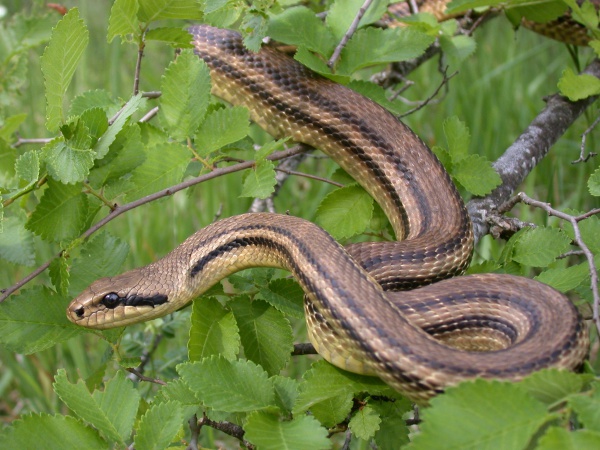Facts About Four-lined snake
Elaphe quatuorlineata, commonly known as the four-lined snake, is a non-venomous member of the Colubridae family and is one of Europe's largest serpents. Adult four-lined snakes are easily identifiable by their four dark stripes running along a yellowish-brown body. In contrast, juveniles exhibit dark brown blotches on a pale brown background. These snakes can grow to lengths of up to 180 cm.
Four-lined snakes inhabit various regions of Europe, including Italy, the western Balkan Peninsula, Greece, Bulgaria, Slovenia, Croatia, Bosnia and Herzegovina, Montenegro, North Macedonia, and Albania. They flourish in Mediterranean climates, favoring environments with vegetation, stone walls, sparse woodlands, forest edges, and even abandoned structures. During winter, they seek refuge in deserted rodent burrows, often clustering together in groups for warmth.
Known for their docile nature, four-lined snakes are most active during the morning and late afternoon. They are also proficient climbers and are frequently found in treetops. Their diet is diverse, comprising small mammals such as rabbits, squirrels, and mice, along with birds, lizards, tortoises, and eggs. Notably, females tend to consume more birds than males.
The mating season for four-lined snakes spans from April to May. Females lay between 6 to 18 eggs in the summer after a gestation period of approximately two months. These eggs incubate for 40 to 60 days before hatching.
Unfortunately, the four-lined snake faces significant threats. In Bulgaria, it is considered endangered due to poaching and agricultural activities. More broadly, the species is listed as "Near Threatened" on the IUCN Red List, primarily due to a suspected significant population decline and widespread habitat loss.

 Moldova
Moldova